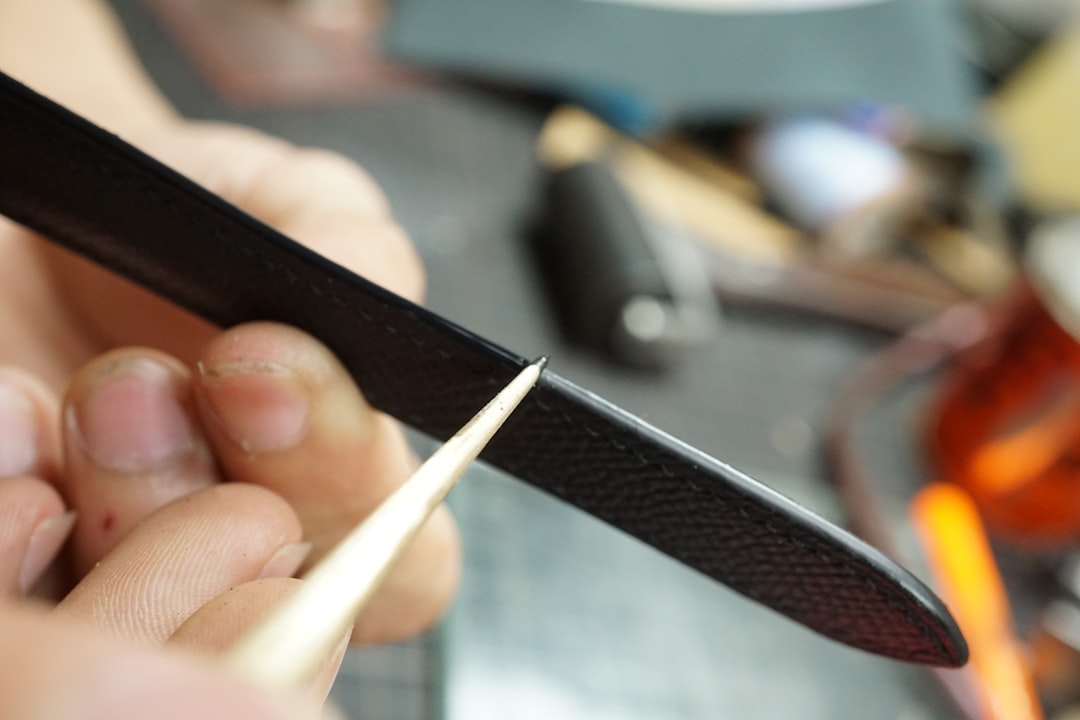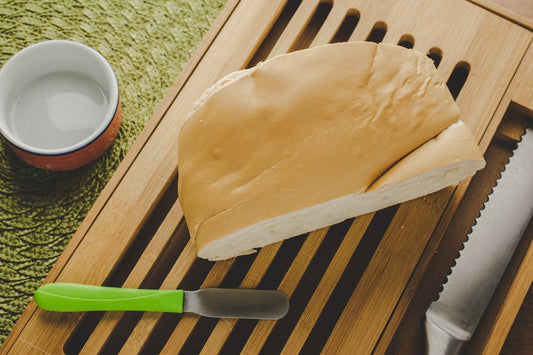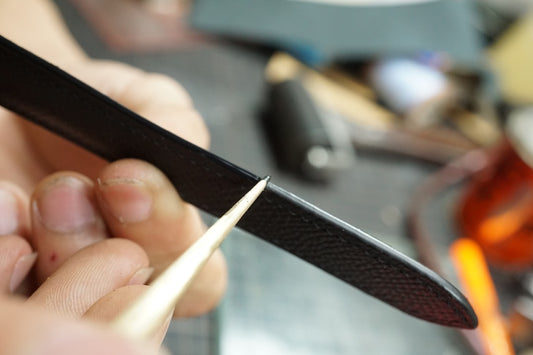
Share
The Ultimate Guide on How to Remove Rust from Japanese Knives and Maintain Their Pristine Condition
Estimated reading time: 10 minutes
Key Takeaways
- Understand why rust forms on Japanese knives.
- Learn step-by-step rust removal techniques using household items and specialized products.
- Implement daily cleaning rituals to prevent rust and maintain knife performance.
- Discover proper storage solutions to protect your knives.
- Use a comprehensive maintenance checklist for long-term care.
Table of Contents
- Understanding Japanese Knives – Japanese Knife Cleaning Tips
- How to Remove Rust from Japanese Knives – How to Remove Rust from Japanese Knives
- Japanese Knife Cleaning Tips – Japanese Knife Cleaning Tips
- Storing Japanese Knives Safely – Storing Japanese Knives Safely & Knife Block vs Magnetic Strip
- Knife Maintenance Checklist – Knife Maintenance Checklist
- Conclusion
- Call to Action
Understanding Japanese Knives – Japanese Knife Cleaning Tips
Japanese knives stand out from regular chef’s knives because of their unique history, construction, and razor-like edge. Caring for them requires a deeper understanding of what sets them apart.
The Heritage and Unique Features
- History: Crafted using methods passed down over centuries, Japanese knives came from swordsmithing traditions. Today’s knife artisans apply the same meticulous attention to detail.
- Construction: These knives often use harder carbon steel, unlike softer stainless steel found in many Western knives. This allows Japanese blades to have sharper, thinner edges and superior cutting precision.
- Designs: Specialized knife shapes (like Santoku, Gyuto, and Nakiri) are tailored for specific kitchen tasks—from slicing fish to chopping vegetables.
Learn more about Japanese knife care and craftsmanship here.
Why Proper Care is Crucial
- Carbon Steel Sensitivity: The high carbon content makes these knives sharper, but also more prone to dulling, chipping, and, importantly, rust.
- Performance and Longevity: Without consistent cleaning and upkeep, Japanese knives can quickly lose their edge, develop unsightly rust, or even become unsafe to use.
- Best Practices: Experts recommend incorporating routine maintenance and prompt cleaning to keep each knife looking and functioning like new.
Explore easy ways to care for your Japanese knife.
Proper care isn’t optional for these tools—it’s a requirement for any serious home chef or professional.
How to Remove Rust from Japanese Knives – How to Remove Rust from Japanese Knives
Even with good habits, rust can appear on your Japanese knives. Act quickly when you see spots or streaks. The following steps explain how to remove rust from Japanese knives safely and thoroughly.
Understanding Why Rust Forms
- Carbon Steel Reactivity: High-carbon knives react faster to moisture and acids. Just a little water or acidic food left on the blade can cause rust.
- Importance of Prompt Care: Leaving rust can eat into the steel, weaken the blade, and be harder to fix as time goes on.
Step-by-Step Rust Removal Using Household Items
You don’t need costly solutions. Here’s a simple, effective method to address everyday rust:
Materials Needed
- Soft cloth or non-scratching sponge
- Baking soda or baking powder (gentle abrasive)
- Warm water
- Mild dish soap (optional)
Instructions
-
Create a Paste
- Mix baking soda with a few drops of warm water to form a thick paste.
-
Apply to Rust
- Smear the paste onto the rusty spots.
- Gently rub with a soft cloth or sponge using small, circular motions.
-
Rinse Thoroughly
- Wash off the paste with warm water.
-
Immediate Drying
- Use a clean, dry towel to wipe every bit of moisture from the blade.
Safety Tips
- Always hold the knife securely and keep the sharp edge pointed away from you.
- Never use steel wool or harsh scouring pads—they can scratch and damage the surface.
Using Specialized Rust Removal Products
If household items don’t fully remove the rust, or if spots are stubborn:
Rust Erasers
- Description: Rubber-like erasers made for cutlery.
-
How to Use:
- Moisten the eraser and blade.
- Gently rub the rusty part until clean.
- Follow the manufacturer's directions for best results.
Fine-Grit Polishing Compounds
- Application: Use a polishing cream or paste intended for knives and apply with a soft cloth.
- Goal: Remove corrosion without scratching or dulling the blade.
Final Steps After Rust Removal
- Wash the knife with mild soap and warm water.
- Dry completely—do not let air dry.
- Apply a thin layer of neutral, food-safe mineral oil to prevent future rust (especially in humid areas).
Get more rust removal tips from sushi chef experts.
Preventative Measures – Stop Rust Before it Starts
Proactive care is the easiest way to avoid rust in the first place.
Immediate Drying
- Never leave a knife wet or air drying. Always towel dry right after washing.
Regular Oiling
- Every few weeks, depending on use, rub a drop of mineral oil over the blade.
- Critical in coastal or humid kitchens.
Proper Storage
- Store knives in a dry place, away from steam or dampness.
For advanced cleaning and preventative routines, check these techniques trusted by Japanese knife masters.
Japanese Knife Cleaning Tips – Japanese Knife Cleaning Tips
Implementing correct daily cleaning rituals helps keep knives sharp, safe, and rust-free. Here are proven Japanese knife cleaning tips for every home chef.
Best Practices for Cleaning Japanese Knives
-
Hand Wash Only
- Always wash Japanese knives by hand—not the dishwasher.
- Use warm water with a small amount of mild detergent.
- Keep the blade’s edge pointed away from your hands for safety.
-
Proper Cleaning Technique
- Hold the handle firmly.
- Use a soft sponge or cloth to gently clean both sides of the blade.
- Avoid scrubbing hard or using abrasive pads.
-
Rinse and Immediate Drying
- Rinse carefully to remove all soap.
- Dry straight away and thoroughly with a clean, dry towel.
- Pay attention to the spine and along the handle where water can hide.
Read more cleaning tips from professional chefs.
Dos and Don’ts
A quick reference for what to do—and what not to do—when cleaning Japanese knives:
Do:
- Clean right after use to prevent food from drying and causing stains.
- Oil the blade regularly, even if the knife looks clean, as a preventive step.
- Use wood or plastic cutting boards to prevent dulling the edge.
Don’t:
- Don’t put in the dishwasher—the heat and detergents can damage both the blade and handle.
- Don’t soak in water for extended periods.
- Don’t use harsh chemical cleaners or bleach.
- Don’t cut on surfaces made of stone, glass, or marble—these can nick or chip the blade instantly.
Discover more dos and don'ts for proper care.
Careful cleaning after every use protects your investment and keeps your blade ready for flawless performance.
Storing Japanese Knives Safely – Storing Japanese Knives Safely & Knife Block vs Magnetic Strip
Put as much thought into storage as you do cleaning. Storing Japanese knives safely is the key to long-term protection.
Why Safe Storage Matters
- Prevents blade damage and accidental cuts.
- Avoids excess moisture—which leads to rust.
- Keeps edges sharp by preventing contact with hard surfaces or other utensils.
Knife Block vs Magnetic Strip
There are multiple smart storage options—each with distinct advantages.
Knife Block
-
Pros
- Protects the blade from accidental nicks or chips.
- Keeps knives organized and within reach.
-
Cons
- Wooden slots can harbor moisture and bacteria if not cleaned.
- Limited to the number of available slots.
Magnetic Strip
-
Pros
- Saves valuable counter space.
- Knives are always visible and accessible.
- Reduces risk of hitting knife edges against other utensils.
-
Cons
- Risk of blade damage if the knife is slammed onto the magnet.
- Weak strips may not hold heavier knives securely.
-
Proper Usage Tips
- Always attach the spine (dull top edge) first to the magnet—never the cutting edge.
- Lift off gently to avoid scraping.
See a video demonstrating proper magnetic strip storage here.
Other Storage Options
- Knife Sheaths (Saya): Slipcovers for single knives, ideal for drawer storage or transport.
- Drawer Inserts: Specialized trays that separate knives by slot, keeping them protected and organized.
Choosing the Right Storage
Consider your kitchen’s size, personal habits, safety requirements, and the number of knives you own. The most important factor: Keep knives dry and prevent the blades from touching other objects.
Explore storage solutions tailored for Japanese knives.
Knife Maintenance Checklist – Knife Maintenance Checklist
Routine care for Japanese knives is simple if you follow a clear process. Use this knife maintenance checklist to help your most valuable kitchen tools last a lifetime.
Daily Care
- Clean immediately after use with warm water and gentle soap.
- Dry completely with a towel—including the handle and blade spine.
- Inspect for rust spots, chips, or signs of wear every time you use the knife.
Weekly Care
- Apply a thin layer of food-safe mineral oil to the blade—more often in humid climates.
- Hone the blade lightly with a ceramic honing rod to keep the edge true between sharpenings. https://okamiblades.com/blogs/新聞/how-to-hone-a-japanese-knife
- Watch a video demonstration of honing here.
Monthly Care
-
Sharpen with a whetstone or arrange professional sharpening.
- Always follow correct angle and stroke techniques to avoid damaging the edge. https://okamiblades.com/blogs/新聞/how-to-sharpen-japanese-knives
-
Handle maintenance
- For wooden handles, rub with a little camellia oil or mineral oil to prevent drying and cracking.
Routine Inspections
- Look carefully for:
- Rust spots
- Blade chips or dings
- Handle cracks or splits
- Address issues as soon as possible—fix small problems before they become big ones.
- Replace or repair knives as needed to ensure safety and performance.
See a complete Japanese knife maintenance guide here.
Sample Knife Maintenance Checklist
| Task | Frequency | Notes |
|---|---|---|
| Clean & dry | After use | Never soak |
| Blade oiling | Weekly | Food-safe neutral oil |
| Honing | Weekly | Ceramic rod, not steel |
| Full sharpening | Monthly | Prefer whetstone |
| Handle oiling | Monthly | For wooden handles |
| Inspect for rust/chips | Every use | Address issues immediately |
For more details on these steps, check these expert guides on knife care and routine maintenance.
Conclusion
Mastering the craft of Japanese knife care starts with understanding their unique materials and construction. This guide has shown how to remove rust from Japanese knives, provided essential Japanese knife cleaning tips, detailed safe storage solutions, and supplied a thorough knife maintenance checklist.
The most important takeaways are:
- Regular Cleaning: Never leave your knife dirty or wet.
- Prompt Rust Removal: Deal with rust at the first sign for easy, safe restoration.
- Proper Storage: Knife block, magnetic strip, or sheath—always dry, always safe.
- Routine Maintenance: Keep blades oiled and sharp. Inspect often for early signs of wear.
Practicing these habits will keep your knives razor-sharp, beautiful, and safe for slicing, dicing, and every culinary adventure ahead.
Cultivate your skills with insights from professional sushi chefs. Delve into advanced care techniques for all Japanese knives. Discover time-tested maintenance routines from master craftsmen.
Proper maintenance is an investment in your knives—and in every dish you create.
Call to Action
We'd love to hear from you! Share your own knife care tips or ask any questions in the comments below.
Stay sharp! Don't forget to subscribe to our blog for more expert advice on knife maintenance and culinary skills.
By implementing these knife maintenance tips and building strong Japanese knife care habits, you can keep your knives performing—and looking—their very best.


